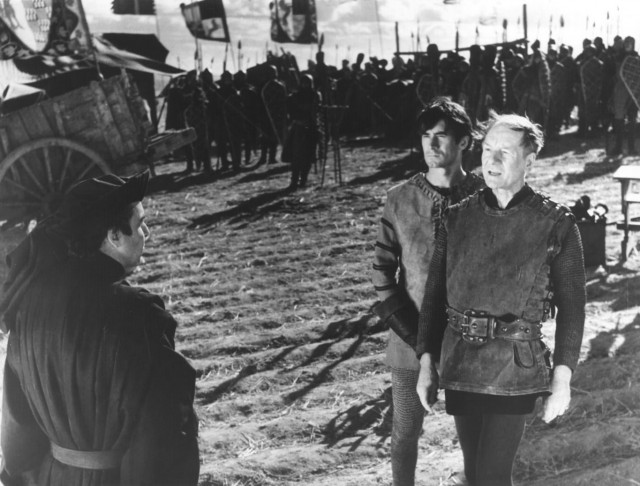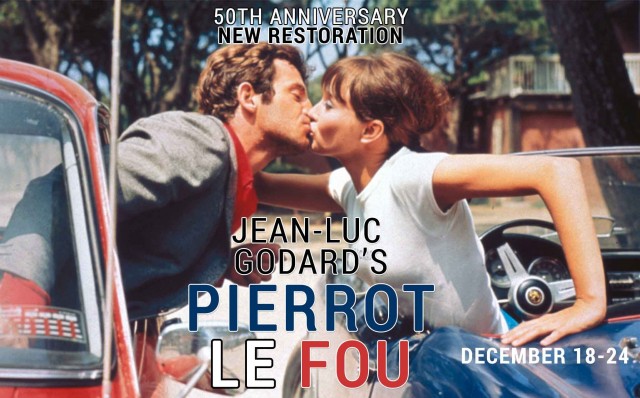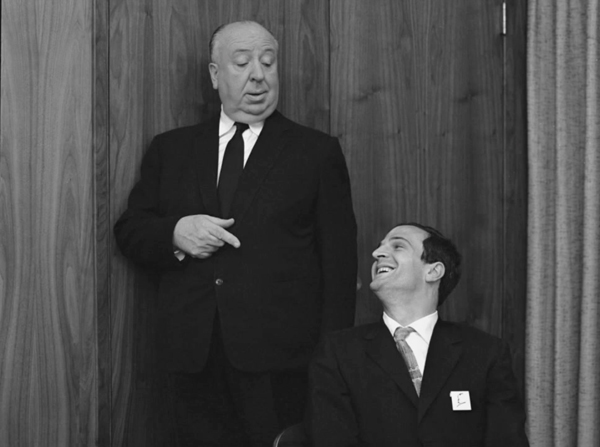
EMBRACE OF THE SERPENT takes viewers on an extraordinary journey into the heart of darkness and beyond
EMBRACE OF THE SERPENT (EL ABRAZO DE LA SERPIENTE) (Ciro Guerra, 2015)
Film Forum, 209 West Houston St., 212-727-8110
Lincoln Plaza Cinema, 1886 Broadway at 63rd St., 212-757-2280
Opens Wednesday, February 17
embraceoftheserpent.oscilloscope.net
 Colombian writer-director Ciro Guerra takes viewers on a spectacular journey through time and space and deep into the heart of darkness in the extraordinary Embrace of the Serpent. Guerra’s Oscar-nominated film, the first to be shot in the Colombian Amazon in thirty years, opens with a 1909 quote from explorer Theodor Koch-Grünberg: “It is not possible for me to know if the infinite jungle has started on me the process that has taken many others to complete and irremediable insanity.” Inspired by the real-life journals of Koch-Grünberg and botanist and explorer Richard Evans Schultes, Guerra poetically shifts back and forth between two similar trips down the Vaupés River, both led by the same Amazonian shaman, each time guiding a white scientist on a perilous expedition in a long, narrow canoe. Shortly after the turn of the twentieth century, ailing white ethnologist Theo (Jan Bijvoet) and his native aid, Manduca (Yauenkü Migue), seek the help of Karamakate (Nilbio Torres), a shaman wholly suspicious of whites and who believes he is the last of his tribe. However, Theo claims he knows where remnants of Karamakate’s people live and will show him in return for helping him find the magical and mysterious hallucinogenic Yakruna plant that Theo thinks can cure his illness. Forty years later, white botanist Evan (Brionne Davis) enlists Karamakate (Antonio Bolívar Salvador) to locate what is thought to be the last surviving Yakruna plant, which he hopes will finally allow him to dream in order to heal his soul. Evoking such films as Werner Herzog’s Fitzcarraldo and Aguirre, the Wrath of God and Francis Ford Coppola’s Apocalypse Now, Embrace of the Serpent makes the rainforest itself a character, shot in glorious black-and-white by David Gallego (Cecilia, Violencia) in a sparkling palette reminiscent of the work of Brazilian photographer Sebastião Salgado. As the parallel stories continue, the men encounter similar locations that have changed dramatically over time, largely as a result of rubber barons descending on the forest and white missionaries bringing Western religion to the natives. It’s difficult to watch without being assailed by imperialist concepts of the “noble savage,” mainly because the Amazon — and our Western minds — have been so profoundly affected by those ideas. “Before he can become a warrior, a man has to leave everything behind and go into the jungle, guided only by his dreams,” the older Karamakate says. “In that journey he has to discover, completely alone, who he really is.”
Colombian writer-director Ciro Guerra takes viewers on a spectacular journey through time and space and deep into the heart of darkness in the extraordinary Embrace of the Serpent. Guerra’s Oscar-nominated film, the first to be shot in the Colombian Amazon in thirty years, opens with a 1909 quote from explorer Theodor Koch-Grünberg: “It is not possible for me to know if the infinite jungle has started on me the process that has taken many others to complete and irremediable insanity.” Inspired by the real-life journals of Koch-Grünberg and botanist and explorer Richard Evans Schultes, Guerra poetically shifts back and forth between two similar trips down the Vaupés River, both led by the same Amazonian shaman, each time guiding a white scientist on a perilous expedition in a long, narrow canoe. Shortly after the turn of the twentieth century, ailing white ethnologist Theo (Jan Bijvoet) and his native aid, Manduca (Yauenkü Migue), seek the help of Karamakate (Nilbio Torres), a shaman wholly suspicious of whites and who believes he is the last of his tribe. However, Theo claims he knows where remnants of Karamakate’s people live and will show him in return for helping him find the magical and mysterious hallucinogenic Yakruna plant that Theo thinks can cure his illness. Forty years later, white botanist Evan (Brionne Davis) enlists Karamakate (Antonio Bolívar Salvador) to locate what is thought to be the last surviving Yakruna plant, which he hopes will finally allow him to dream in order to heal his soul. Evoking such films as Werner Herzog’s Fitzcarraldo and Aguirre, the Wrath of God and Francis Ford Coppola’s Apocalypse Now, Embrace of the Serpent makes the rainforest itself a character, shot in glorious black-and-white by David Gallego (Cecilia, Violencia) in a sparkling palette reminiscent of the work of Brazilian photographer Sebastião Salgado. As the parallel stories continue, the men encounter similar locations that have changed dramatically over time, largely as a result of rubber barons descending on the forest and white missionaries bringing Western religion to the natives. It’s difficult to watch without being assailed by imperialist concepts of the “noble savage,” mainly because the Amazon — and our Western minds — have been so profoundly affected by those ideas. “Before he can become a warrior, a man has to leave everything behind and go into the jungle, guided only by his dreams,” the older Karamakate says. “In that journey he has to discover, completely alone, who he really is.”
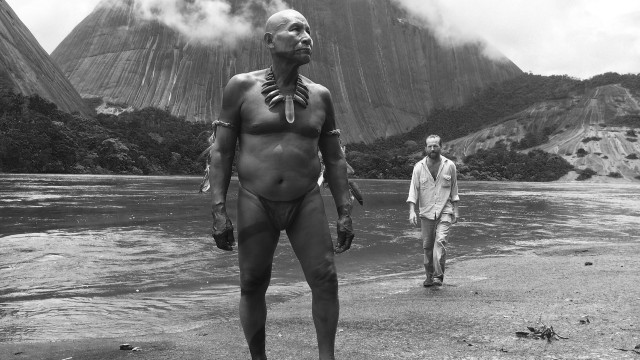
Guide Karamakate (Antonio Bolívar Salvador) and botanist Evan (Brionne Davis) explore dreams in Ciro Guerra’s EMBRACE OF THE SERPENT
Winner of the Directors’ Fortnight Art Cinema Award at the Cannes Film Festival and nominated for a Best Foreign Language Film Academy Award, Embrace of the Serpent is an unforgettable spiritual quest into the ravages of colonialism, the evils of materialism, the end of indigenous cultures, and what should be a sacred relationship between humanity and nature. Written by Guerra (2004’s Wandering Shadows, 2009’s The Wind Journeys) and Jacques Toulemonde (Anna), it is told from the point of view of the indigenous people of the Amazon, whom Guerra worked closely with in the making of the film, assuring them of his intentions to not exploit them the way so many others have. Aside from the Belgian Bijvoet and the Texan Davis, the rest of the cast is made up of members of tribes that live along the Vaupés. Guerra actually brought along a shaman known as a payé to perform ritual ceremonies to ensure the safety of the cast and crew and to protect the jungle itself. “What Ciro is doing with this film is an homage to the memory of our elders, in the time before: the way the white men treated the natives, the rubber exploitation,” Torres, in his first movie, says about the film. “I’ve asked the elders how it was and it is as seen in the film; that’s why we decided to support it. For the elders and myself it is a memory of the ancestors and their knowledge.” Salvador, who previously had bad experiences with filmmakers, notes, “It is a film that shows the Amazon, the lungs of the world, the greater purifying filter, and the most valuable of indigenous cultures. That is its greatest achievement.” Embrace of the Serpent is a great achievement indeed, an honest, humanistic, maddening journey that takes you places you’ve never been. Embrace of the Serpent opens February 17 at Lincoln Plaza and Film Forum; Guerra will participate in a Skype Q&A at Film Forum following the 6:40 screening on February 20.
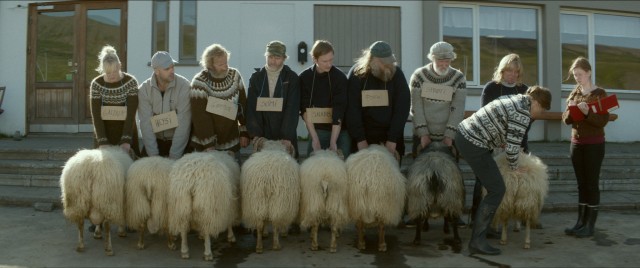
 When scrapie, a fatal neurodegenerative disease, is discovered in sheep in a close-knit farming community in rural Iceland, two brothers who have not spoken in forty years are forced to take a hard look at their lives in Grímur Hákonarson’s endearing gem of a film, Rams. Siblings Gummi (Sigurður Sigurjónsson) and Kiddi (Theodór Júlíusson) raise sheep on their family farm, but they are locked in a feud that has lasted four decades. Neither man has ever married or had kids, and they essentially ignore each other when not exchanging handwritten messages relayed by Kiddi’s dog. The outbreak of scrapie, which is related to mad cow disease, means that all of the rams and sheep in the area have to be slaughtered and all the facilities thoroughly cleaned and disinfected, threatening the livelihood of numerous farmers. While Kiddi reacts by hitting the bottle, Gummi, ruled by his heart, has a different plan, one that could land him in serious trouble.
When scrapie, a fatal neurodegenerative disease, is discovered in sheep in a close-knit farming community in rural Iceland, two brothers who have not spoken in forty years are forced to take a hard look at their lives in Grímur Hákonarson’s endearing gem of a film, Rams. Siblings Gummi (Sigurður Sigurjónsson) and Kiddi (Theodór Júlíusson) raise sheep on their family farm, but they are locked in a feud that has lasted four decades. Neither man has ever married or had kids, and they essentially ignore each other when not exchanging handwritten messages relayed by Kiddi’s dog. The outbreak of scrapie, which is related to mad cow disease, means that all of the rams and sheep in the area have to be slaughtered and all the facilities thoroughly cleaned and disinfected, threatening the livelihood of numerous farmers. While Kiddi reacts by hitting the bottle, Gummi, ruled by his heart, has a different plan, one that could land him in serious trouble.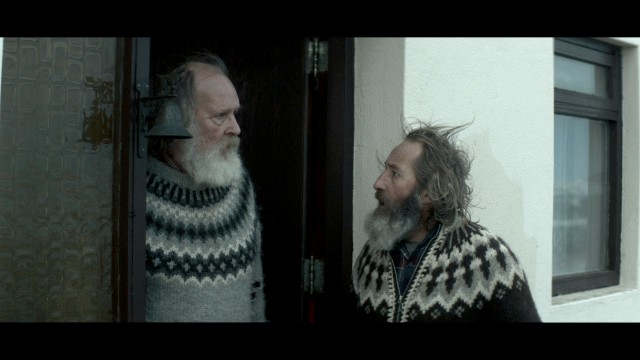
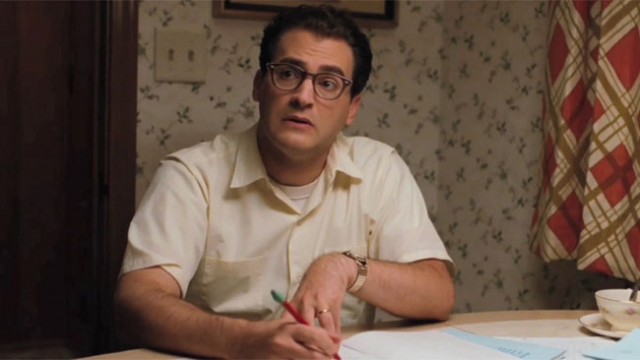
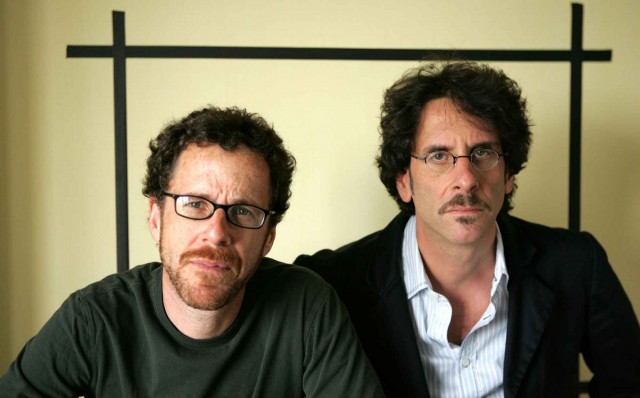
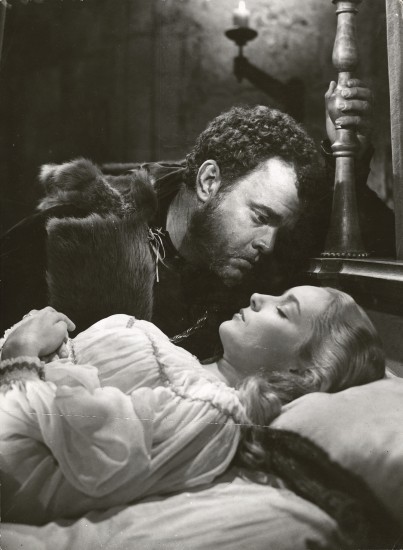
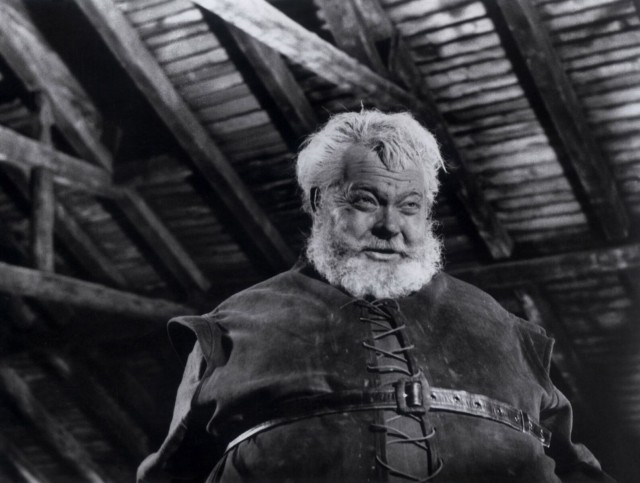
 “Jesus, the days that we have seen,” Justice Shallow (Alan Webb) says to Sir John Falstaff (Orson Welles) several times at the beginning of Chimes at Midnight, as the two old friends walk through a snowy forest. “We have heard the chimes at midnight,” Falstaff replies. Welles’s career as a writer, director, and actor in theater, television, radio, and film was fraught with conflict as budget problems, scheduling issues, and fights with producers led to a slew of unfinished projects and works edited against his wishes. Welles might have achieved his legendary status with such classic films as Citizen Kane, The Magnificent Ambersons, and Touch of Evil, but his own personal favorite was the 1965 black-and-white Chimes at Midnight (aka Falstaff). Welles spent decades working on his unique retelling of the story of the big, bawdy Sir John, attempting various stage productions before finally making the film in Spain in 1964-65. The script was adapted from Shakespeare’s Henry IV, Parts 1 and 2, Richard II, Henry V, and The Merry Wives of Windsor, with historical narration by Sir Ralph Richardson from the sixteenth-century Holinshed’s Chronicles. Welles is both boisterous and sad as Falstaff, a larger-than-life braggadocio who is both friend and father figure to Hal (Keith Baxter), the Prince of Wales, whose father, Henry IV (Sir John Gielgud), gained the throne by murdering Richard II. Hal would rather cavort with Ned Poins (Tony Beckley), Falstaff, and Falstaff’s rogue circle, which includes Pistol (Michael Aldridge), Bardolph (Patrick Bedford), and Peto, than serve the king at the castle. Meanwhile, Richard II’s supporters, led by the Earl of Worcester (Fernando Rey), Henry Percy, known as Hotspur (Norman Rodway), and the Earl of Northumberland (José Nieto), plot to take back the crown. Much of the film is set in the Boar’s Head Tavern, which is run by the elderly Mistress Quickly (Margaret Rutherford) and where Falstaff engages with prostitute Doll Tearsheet (Jeanne Moreau). Everything comes crashing together during the Battle of Shrewsbury, one of the most exciting, breathtaking battle scenes ever filmed, a nearly ten-minute spectacle of fierce fighting interlaced with Falstaff’s comic bumbling and concluding with Hal and Hotspur’s climactic face-off.
“Jesus, the days that we have seen,” Justice Shallow (Alan Webb) says to Sir John Falstaff (Orson Welles) several times at the beginning of Chimes at Midnight, as the two old friends walk through a snowy forest. “We have heard the chimes at midnight,” Falstaff replies. Welles’s career as a writer, director, and actor in theater, television, radio, and film was fraught with conflict as budget problems, scheduling issues, and fights with producers led to a slew of unfinished projects and works edited against his wishes. Welles might have achieved his legendary status with such classic films as Citizen Kane, The Magnificent Ambersons, and Touch of Evil, but his own personal favorite was the 1965 black-and-white Chimes at Midnight (aka Falstaff). Welles spent decades working on his unique retelling of the story of the big, bawdy Sir John, attempting various stage productions before finally making the film in Spain in 1964-65. The script was adapted from Shakespeare’s Henry IV, Parts 1 and 2, Richard II, Henry V, and The Merry Wives of Windsor, with historical narration by Sir Ralph Richardson from the sixteenth-century Holinshed’s Chronicles. Welles is both boisterous and sad as Falstaff, a larger-than-life braggadocio who is both friend and father figure to Hal (Keith Baxter), the Prince of Wales, whose father, Henry IV (Sir John Gielgud), gained the throne by murdering Richard II. Hal would rather cavort with Ned Poins (Tony Beckley), Falstaff, and Falstaff’s rogue circle, which includes Pistol (Michael Aldridge), Bardolph (Patrick Bedford), and Peto, than serve the king at the castle. Meanwhile, Richard II’s supporters, led by the Earl of Worcester (Fernando Rey), Henry Percy, known as Hotspur (Norman Rodway), and the Earl of Northumberland (José Nieto), plot to take back the crown. Much of the film is set in the Boar’s Head Tavern, which is run by the elderly Mistress Quickly (Margaret Rutherford) and where Falstaff engages with prostitute Doll Tearsheet (Jeanne Moreau). Everything comes crashing together during the Battle of Shrewsbury, one of the most exciting, breathtaking battle scenes ever filmed, a nearly ten-minute spectacle of fierce fighting interlaced with Falstaff’s comic bumbling and concluding with Hal and Hotspur’s climactic face-off. 